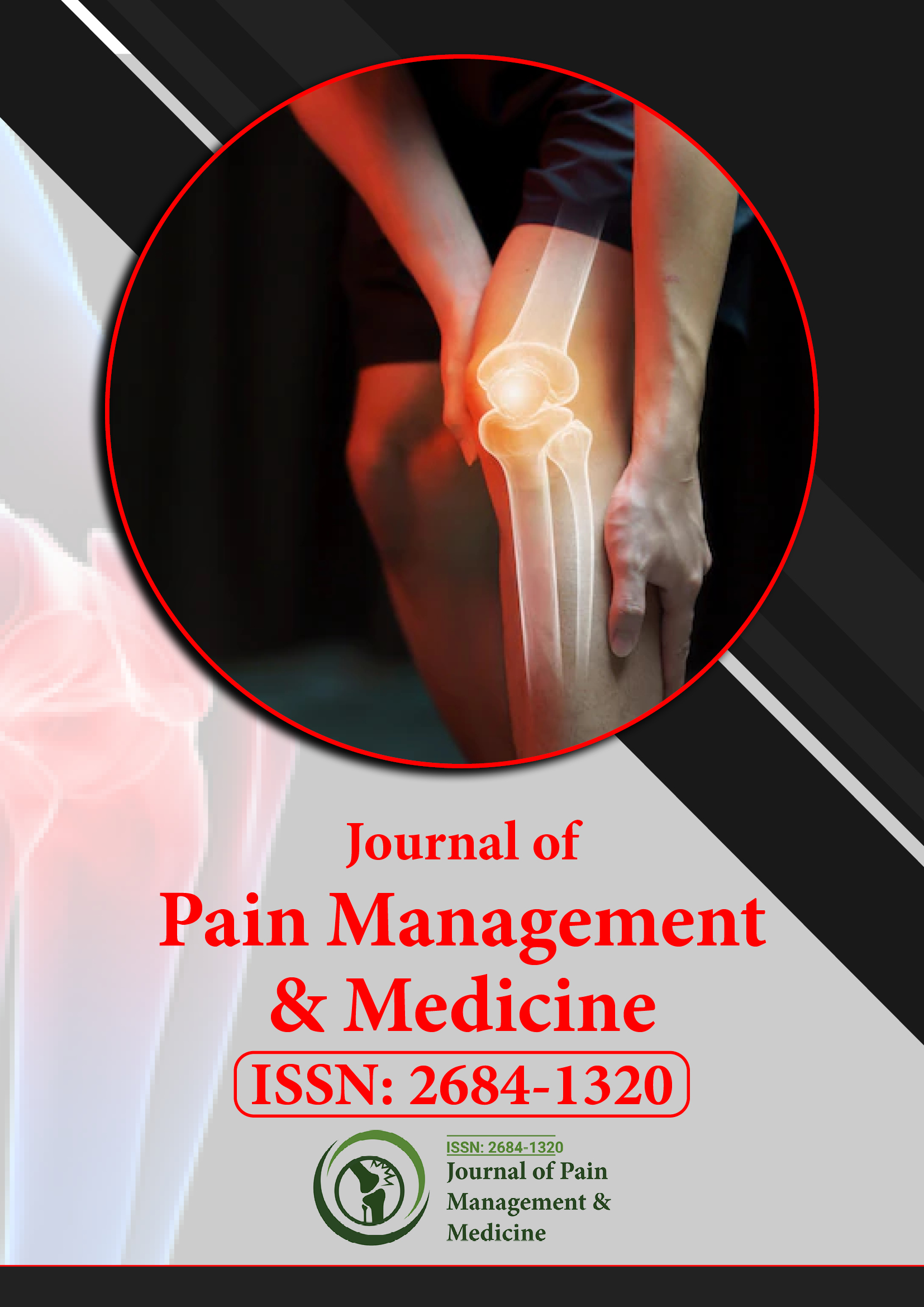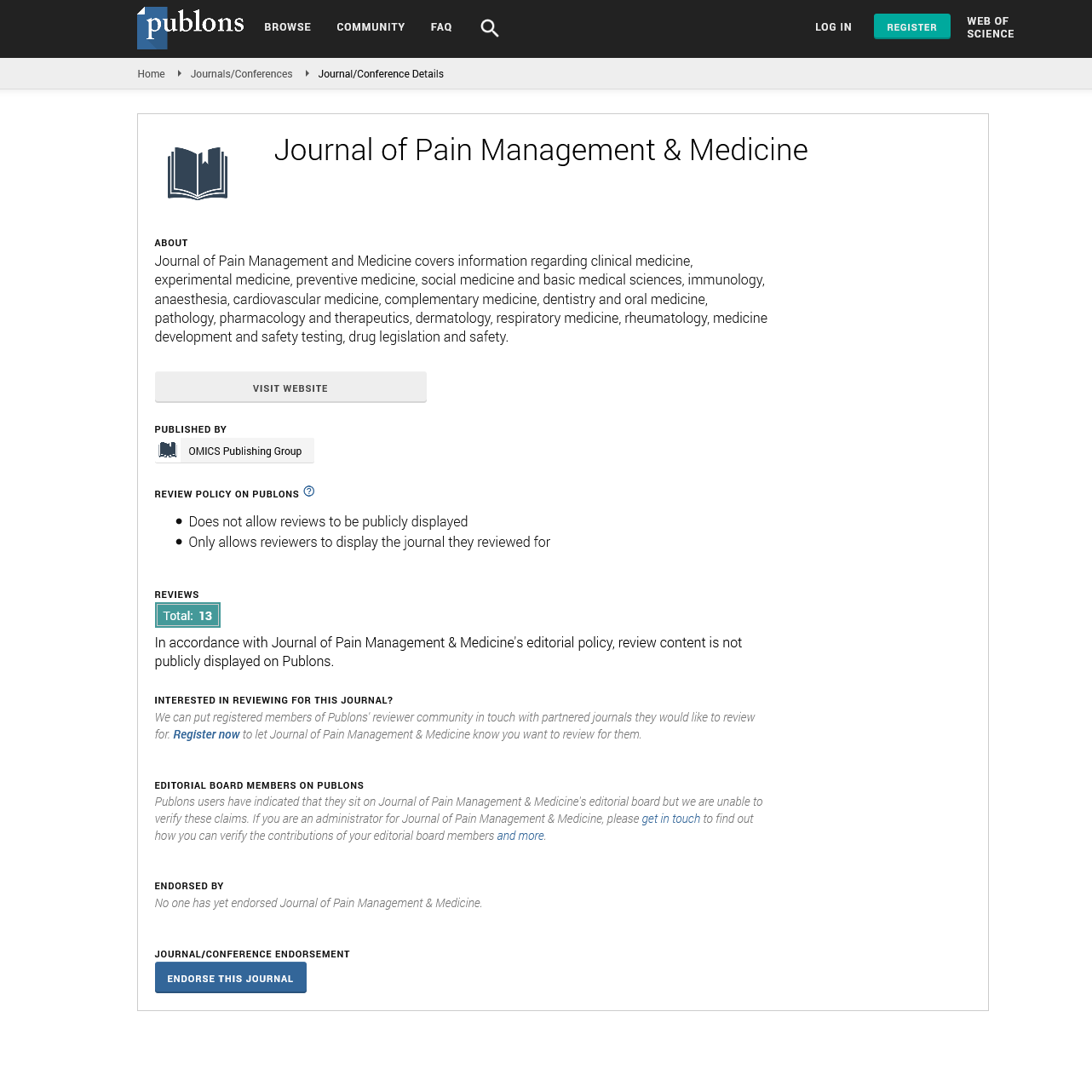Indexed In
- RefSeek
- Hamdard University
- EBSCO A-Z
- Publons
- Euro Pub
- Google Scholar
- Quality Open Access Market
Useful Links
Share This Page
Journal Flyer

Open Access Journals
- Agri and Aquaculture
- Biochemistry
- Bioinformatics & Systems Biology
- Business & Management
- Chemistry
- Clinical Sciences
- Engineering
- Food & Nutrition
- General Science
- Genetics & Molecular Biology
- Immunology & Microbiology
- Medical Sciences
- Neuroscience & Psychology
- Nursing & Health Care
- Pharmaceutical Sciences
Opinion Article - (2025) Volume 11, Issue 1
Chronic Pain: A Silent Epidemic That Deserves More Attention Hung Sang*
Hung Sang*Received: 24-Feb-2025, Manuscript No. JPMME-25-28518 ; Editor assigned: 26-Feb-2025, Pre QC No. JPMME-25-28518 (PQ); Reviewed: 12-Mar-2025, QC No. JPMME-25-28518 ; Revised: 19-Mar-2025, Manuscript No. JPMME-25-28518 (R); Published: 26-Mar-2025, DOI: 10.35248/2684-1320.25.11.310
Description
Chronic pain is an invisible yet debilitating condition that affects millions of people worldwide. Unlike acute pain, which serves as a temporary warning signal for injury, chronic pain persists for months or even years, severely impacting an individual’s physical, emotional, and social well-being. Despite its prevalence, chronic pain remains underdiagnosed, misunderstood, and often dismissed by society and even healthcare providers. In my opinion, it is time for chronic pain to be recognized as a critical public health issue that demands better treatment options, greater awareness, and a more compassionate approach.
One of the most frustrating aspects of chronic pain is the stigma surrounding it. Because pain is subjective and lacks visible symptoms, many patients are met with skepticism or accused of exaggerating their discomfort. This skepticism extends into the medical field, where patients frequently struggle to receive proper diagnosis and treatment. Many physicians, constrained by limited knowledge of pain management or concerns about opioid use, fail to offer adequate solutions. As a result, patients are often left feeling hopeless, cycling through ineffective treatments and facing a reduced quality of life.
Another major issue is the over-reliance on medication, particularly opioids, as a primary treatment method. While opioids can provide relief, they come with significant risks, including addiction and dependency. Instead of focusing solely on pharmaceutical solutions, a more comprehensive approach to pain management is needed. Integrative treatments such as physical therapy, Cognitive-Behavioral Therapy (CBT), acupuncture, and lifestyle modifications have shown promise in managing chronic pain. Unfortunately, these alternatives are often not covered by insurance or remain inaccessible to many due to high costs and lack of availability.
The impact of chronic pain goes beyond the physical body—it takes a massive toll on mental health. Constant pain can lead to depression, anxiety, and social isolation, as individuals struggle to maintain relationships, work, and daily activities. Despite this, mental health support is rarely included as part of chronic pain treatment plans. In my opinion, addressing the psychological aspect of chronic pain should be a priority, with access to counseling and support groups made readily available for those in need. Additionally, there needs to be a shift in how we perceive and approach chronic pain research. Too often, pain management research is underfunded compared to other medical conditions, leading to slow progress in developing new treatments. Governments and medical institutions must allocate more resources to studying the complexities of chronic pain and developing innovative, non-addictive treatment options. Society as a whole also plays a role in supporting those with chronic pain. Employers, for instance, should implement flexible work arrangements for individuals who struggle with pain-related disabilities. Schools and workplaces should foster awareness about chronic pain conditions, reducing stigma and promoting understanding. Friends and family members of chronic pain sufferers should educate themselves on how to offer meaningful support, as empathy can make a significant difference in someone’s pain journey.
Conclusion
Chronic pain is more than just a physical condition-it is a social and medical issue that needs urgent attention. By fostering awareness, expanding treatment options, and breaking the stigma, we can create a more inclusive and supportive world for those who live with chronic pain every day.
Citation: Sang H (2025). Chronic Pain: A Silent Epidemic That Deserves More Attention. J Pain Manage Med. 11:310.
Copyright: © 2025 Sang H. This is an open access article distributed under the terms of the Creative Commons Attribution License, which permits unrestricted use, distribution and reproduction in any medium, provided the original author and source are credited.

